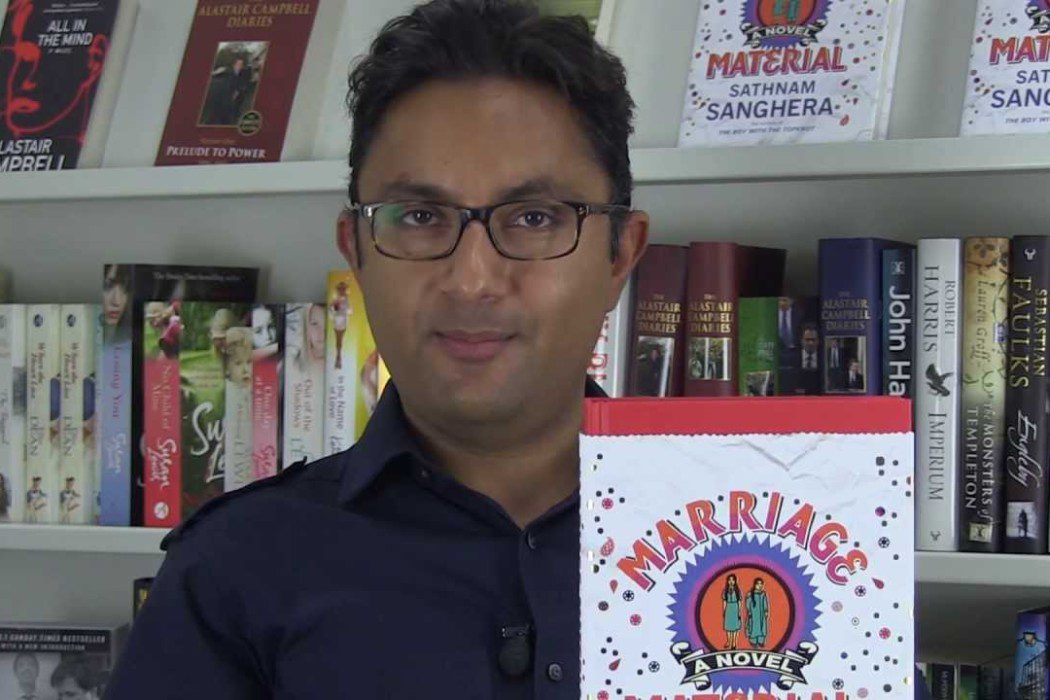The acknowledgement of caste issues by a new generation of British Asian writers is a welcome development, but their efforts are undercut by having to simplify matters for a Western audience, says Kavita Bhanot.
Recent British Asian literature in English has, for the first time, started to engage head on with caste. Two recent novels in particular, Sathnam Sanghera’s Marriage Material, and Sunjeev Sahota’s The Year of the Runaways have Dalit protagonists at their heart and grapple with the prejudice and casteism inherent within Sikh communities. Interestingly, both writers are Jat Sikh.
Until recently, the work of South Asian origin writers in Britain avoided the issue that underpins virtually every aspect of our lives, whether we live in the subcontinent or belong to its diaspora, whether we are Hindu nationalists or claim to be progressive—liberals or Marxists.
A reason for this blindness has perhaps been due to the fact that, until the last decade, most South Asian British writers have tended to be elite, urban, upper-caste. From this location, they have been able to afford to be blind to the ways in which caste continues to play out in Britain, including as the guarantor and source of their privilege—privilege that allows them to write (certainly in English), and be published and celebrated. This blindness is all the more the case with “progressive” or leftist writers who assume that casteism is only something that happens in “backward” villages, amongst those who are less progressive, right-wing perhaps, or uneducated.
A reason for this blindness has perhaps been due to the fact that, until the last decade, most South Asian British writers have tended to be elite, urban, upper-caste. From this location, they have been able to afford to be blind to the ways in which caste continues to play out in Britain, including as the guarantor and source of their privilege.
A second reason for this blindness is that these earlier writers (British or cosmopolitan) and their works have been located in structures of whiteness, writing and publishing in England where whiteness is the norm. Writers have been writing, consciously or unconsciously for white readers, they internalise and reproduce a white gaze—so it is perhaps not surprising that, from this perspective caste is not seen, or is erased.
Although works by this new generation of writers continue to be located in these structures of whiteness (and engage with caste from this perspective), these young British Asian writers are themselves from a very different background, neither elite nor urban (although within the Punjabi context, as Jats, they are upper caste.) The label “British Asian” itself carries working-class associations. This is maybe because the label is the self-assertion or imposed identity of second-generation migrants whose parents came (were invited) to Britain to work in British factories in the sixties and seventies, during a brief revival of its dying industries. This is the history of a new generation of British Asian writers that include the poet Daljit Nagra and fiction writers Nirpal Dhaliwal, Sathnam Sanghera and Sunjeev Sahota. All of them male, and Jat Sikh, their parents are from the villages of Punjab.
Perhaps this is why the caste dynamic, such a sharp and oppressive aspect of village life and carried to Britain where it continues to be naked and “in your face” or subtle in the perpetuation of power and privilege, has become increasingly central to the work of these new writers.
Sathnam Sanghera’s memoir, The Boy with the Topknot, is not overtly about caste. Although it gives second-generation Punjabis from Punjab, brought up in the industrial regions of Britain, a precious and exciting reflection (perhaps for the first time) of their experiences, it is clearly directed towards and written for white readers. This is apparent in the way that Punjabi, Asian, or Sikh culture is so often explained, simplified and ridiculed; it is apparent in the title itself, which highlights and exoticises something that is very ordinary when located within Punjabi culture.
The memoir hinges on two pivots; the first is the point at which Sanghera, as a teenager, secretly cuts his hair without telling his mother, a moment which heralds freedom for him, allowing him to fit into his private white school, to become popular, head boy even (earlier he was bullied due to his top-knot), and eventually to get a place to study at Cambridge and become a successful journalist. There is little in Sanghera’s memoir that seems to reflect on and complicate the violence and oppression of such racism that makes popularity and success dependent on cutting his hair. Instead, the focus of the memoir is on the “reverse racism” of his parents, in particular his mother, who pressurises him to marry a Jat Sikh girl.
The second liberatory moment of the memoir is the letter that Sanghera gives his mother at the end of the memoir, to explain to her that it is unlikely that he will never marry a Jat Sikh girl as she wishes him to. “It would be better if you married a gori than a churi or chamar,” his mother says to him, “a takan, someone of the carpenter caste, would be better too, or a Hindu, but it would be difficult with a chamar.”
While Sanghera recognises that Sikhs have continued to practice caste, in defiance of their religion, for centuries, it is not Sikhism that has apparently enlightened him, but his British education.
The writer/narrator refers to Guru Nanak in his letter to his mother, as he tries to convince her that he should be able to marry who he pleases: “I don’t believe it is right, morally speaking, even on the terms of the Sikh religion, to pick a spouse on the grounds of caste and religion. Indeed, when Guru Nanak established our faith, one of his motivations was to free people of the burden of caste. ‘Caste is worthless and so is its name.’ he wrote in the Guru Granth Sahib. ‘For everyone there is only one refuge . . . Recognise the light, do not ask about caste.’”
While Sanghera recognises that Sikhs have continued to practice caste, in defiance of their religion, for centuries, it is not Sikhism that has apparently enlightened him, but his British education. And it is perhaps due to the “great country” he has been “allowed to grow up in”, that his response to his mother is that “to be honest, if I ever manage to persuade anyone to marry me, they will probably be . . . English.”
Although he does not have a girlfriend, Saghera’s intention in the letter is to make it clear to his mother that he will probably marry a white woman. Displaying an inordinate fascination with the white woman (analysed by Fanon in Black Skin, White Masks as an aspect of the self-loathing that the west inculcates in the black man), he displays little likelihood of being attracted to a black, Muslim, Dalit woman—a form of casteism in itself.
What we see in the memoir is a western distaste for the notion of caste as another backward aspect of Asian, Indian, Punjabi culture, as well as a blindness to the author’s own entanglement in caste hierarchies.
What we see in the memoir is a western distaste for the notion of caste as another backward aspect of Asian, Indian, Punjabi culture, as well as a blindness to the author’s own entanglement in caste hierarchies. Western liberalism is held up as an enlightening alternative, liberalism which, when uncovered, reveals the author to find only white middle class women attractive, or “normal”.
We find the same perspective (western liberalism as the liberating solution to “backward” ideas of caste), all the more clearly, in Sanghera’s novel Marriage Material. The protagonist, Arjan, is in love with a white middle-class woman, Freya, and has to deal with family resistance to his impending marriage to her. Caste prejudice in Sikh communities is more clearly at the heart of this novel—the narrator’s father, Tanvir, a Chamar, is married to a Jat woman.
Again, it is England that allows Tanvir to make something of his life and escape Punjab’s oppressive caste system. This casteism is, for Tanvir, a reason to “leave behind” Indian culture, identity, practices, faith. While it would have been difficult for him to escape his caste background in India, in Britain, “I have built a thriving business and can consider myself an Englishman equal to any other. I feel liberated . . . ” It is not collective political or religious resistance that leads to change but individuals like Tanvir becoming more “English”. In a sense, it is only as he becomes more English, learning the language, becoming successful in Britain, that Tanvir “loses caste”.
It is perhaps inevitable that, despite “good intentions”, representations by upper castes will always reveal unexamined casteism that includes a laziness in regard to engaging with the complexity of the lives of Dalit characters.
Meanwhile, the inherited, unexamined casteism of the author himself is revealed in subtle ways that belie the novel’s apparently progressive intentions. From the point of view of the Jat Sikh, westernised, liberated Surinder, who will be Arjan’s aunt, “the idea of being in close proximity to Tanvir’s shoulders, fingering his greasy hair , making chit-chat in his painfully bad English, is about as appetising as plunging a hand down the bowl of the outside loo.” This point of view is not simply that of one character, for Surinder, like Arjan, is a narrator—their points of view are normative, in the logic of the novel.
Sunjeev Sahota’s recent novel The Year of the Runaways is a far more interesting, complex engagement with similar issues. It is less clearly located in Britishness and whiteness, although it is suggested by the end that the female narrator Narinder, a Jat Sikh for whom Sikhism is so important, must leave behind her family, culture and faith; she must get a job, earn money, become more independent and thus “free”. By the end of the novel, she removes her turban. But she is a nuanced and sensitively drawn character. The stirrings of a relationship with Tochi, a Chamar, are drawn, primarily from her perspective, suggesting that perhaps she is a true Sikh. Tochi, an illegal migrant in Britain, living in the cocoon of Sikh, Punjabi communities, is especially vulnerable to the caste prejudice that he faces at every step in England.
Again, examining the representation of Tochi (Tarlochan) by a Jat Sikh writer, it is perhaps inevitable that, despite “good intentions”, representations by upper castes will always reveal unexamined casteism that includes a laziness in regard to engaging with the complexity of the lives of Dalit characters. The story of Tochi’s past in India is vague and unconvincing, and often seems to carry the patronising air of a life being explained to white readers.
A sense of poverty porn, Tochi’s naïve, blank, almost sedated gaze through his life, and his blankness in the face of do-gooding or patronising upper class/caste characters, reminds me of Aravind Adiga’s White Tiger.
The politics which causes his family to be attacked is hazy and betrays ignorance—a right-wing saffron sangh in Bihar forbids Dalits from leaving their homes on one day of the year, defending them are the “Dalit” Maoists. Such a confused depiction of Bihari politics can only be a vague estimation for white readers. The “next village” that Tochi travels to is described as “another dirt-driven plot of huts and flat fields of wheat and corn.”
A sense of poverty porn, Tochi’s naïve, blank, almost sedated gaze through his life, and his blankness in the face of do-gooding or patronising upper class/caste characters, reminds me of Aravind Adiga’s White Tiger. Meanwhile, Tochi’s family seem to be defined only by their poverty; there is little characterisation, culture, religion, lived-lifeness. All this is inevitable in upper-caste representations of Dalits; it is important to read critically, in order to interrogate ourselves also.














